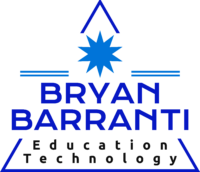As I am just starting to develop ideas around the education technology which I am most interested in, I do not have a concise list of journal articles yet pertaining to any one specific topic. My education technology issue contains several smaller subtopics within which I am still trying to figure out my approach to the research. This being said, I will break my preliminary research down into a couple areas of interest.
Professional Development Concerns in Rural Settings:
This is the first area of which I have begun my research within a literature review justification for the creation of a localized Technology Education website. Literature clearly supports my view of the unique needs of northern educators when it comes to professional development due to factors like “geographic isolation of teachers and schools, limited availability of staff development resources, and the unavailability of a cadre of substitute teachers for release time” (Kitchenham & Chasteauneuf, 2023, p. 875). For these reasons, perhaps the use of a blended approach to professional development with both in-person and online opportunities like my website idea is best suited for rural educators. Furthermore, my website could “provide ongoing opportunities for collaboration among teachers across content and grade levels” (Hunt-Barron et al., 2015, p. 2). In fact, “the discovery of collaborative opportunities, exploration of these opportunities, and the crystallization of collaborative research relations can lead to rich opportunities to share resources and develop quality research products” (Lapadat & Janzen, 2010, p. 72).
ePortfolios as a Form of Student Showcase:
This is another area that could be further researched and developed with my project idea is Electronic Portfolios (ePortfolios) as student work can be showcased and shared on the website. Here is a literature summary I wrote for my group presentation on the topic:
ePortfolios are collections of student selected and generated artifacts that can showcase either a student’s process or their achievement. As noted by Donaldson (2018), “there are different types of e‑portfolios, different ways in which they offer advantages over paper-based counterparts, and different ways in which they can be used in education.” In their most ambitious applications, they can be workspaces that students reflect, collaborate, and showcase their learning journey. They can even capture aspects of learning that are typically difficult to observe. For example, according to Walland & Shaw (2022), ePortfolios provide “opportunities to access hard-to-measure constructs such as collaboration, reflection and a student’s learning journey.” Furthermore, Finger & Jamieson-Proctor (2009) claims, “the process of producing an e‑portfolio (writing, typing, recording etc.) constitutes an additional step in the construction of an e‑portfolio and usually requires the synthesis of ideas; reflection on achievements; and self-awareness and planning, with the potential for educational, developmental or other benefits.”
A constant struggle in education today is the difficulty in collecting authentic data on a student’s learning progress. Jenson & Treuer (2014) states “The e‑portfolio can provide the necessary framework for learners to [provide authentic evidence], if they have a clear understanding of the portfolio’s purpose and use.” Students show their understanding in many different ways with some methods inducing anxiety (like written, or timed tests) and others lacking engagement (like homework or assignments). To resolve this problem without the burdensome task of creating many different methods of assessments for one objective, ePortfolios enable us to evaluate several objectives with a single body of work — this is an example of authentic assessment. Chang et al. (2012) explains that “Authentic assessment involves student engagement in the evaluation process by using authentic evidences of learning processes and outcomes.”
ePortfolios solve two problems that educators face when it comes to assessment: (first) they are engaging for students and (second) they provide us longitudinal data on student progress. Karlin 2016 “found [that] the integration of ePortfolios to be engaging for students and a practice worth continuing.” Jenson & Treuer (2014) further stated that “Graduates are better equipped for a lifetime of self-directed learning if educators teach them to regulate their learning behaviors; to document, critically reflect on, and integrate their learning; and to collaborate.” An added benefit is that students can use these portfolios to apply to post-secondary institutions or compete for jobs in the future.
Concluding Statements:
The need for rural educators to have a localized resource such as my website idea is clear as it could provide a space for professional development resources, instructional resource collaboration and sharing, and student showcases and ePortfolio hosting. More research is still needed in this area but considering we are only in our first semester of this Masters program, there will be ample opportunities to continue with this topic.
Bibliography:
Kitchenham, A., & Chasteauneuf, C. (2023). Teacher Supply and Demand: Issues in Northern Canada.
